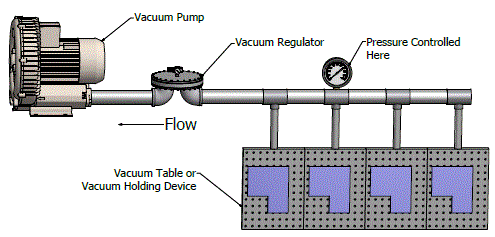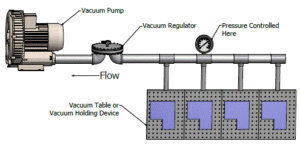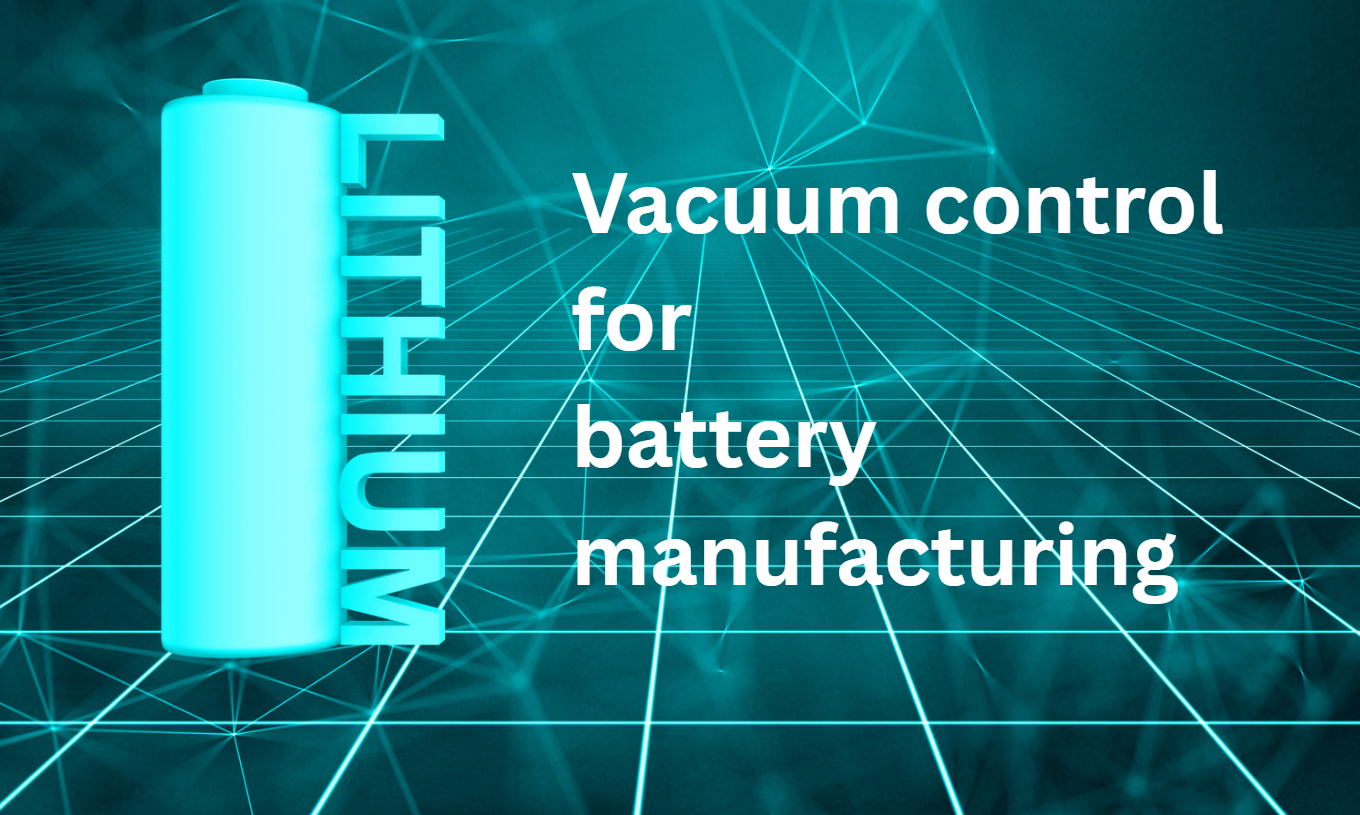Vacuum technology is commonly used to hold objects in place for processing or positioning. Vacuum table, vacuum conveyor and vacuum pick-and-place operations are examples of this type of application.
In most vacuum holding applications, flow rate and pressure vary significantly during start-up and when disruptions occur in the manufacturing process. While some vacuum applications are tolerant of this pressure variation, others require more consistent vacuum control. Semiconductor and electronic circuit board manufacturing, for example, often require engineers to consider non-traditional options in order to provide stable vacuum control to protect the delicate materials involved.
A new Equilibar application page and video provide practical explanations about how the Equilibar® Vacuum Regulator (EVR) can address the challenges of sensitive vacuum workholding applications. The page focuses on factors involved in two specific types of vacuum holding–a Vacuum Hold Down Table and a Vacuum Pick and Place.
In the case of a Vacuum Hold Down Table, flow rate fluctuates rapidly as the number of open holes in the table vary due to objects being placed on and taken off the table during processing. This fluctuation in flow often causes an unregulated system to fluctuate in vacuum pressure, resulting in changes to suction force. For a sensitive object such as a delicate silicon wafer or membrane, these variations can have adverse quality control issues since the parts can be damaged from over-pressurization exposure to high vacuum.
The solution is to use a vacuum regulator that is quick to respond to rapid system changes. The EVR offers a good choice because of its ability to immediately respond when it senses a change. This is possible because of its dome-loaded multiple orifice design. (See this explanation on our How It Works page.) The EVR is capable of providing stable pressure across the vacuum table even when the flow rate varies by 100:1 ratio.
Vacuum Pick and Place operations require nimble and fast control of both the picking plunger and the vacuum suction pressure, resulting in a similar need for control that can handle wide flow rate ranges and pressure changes. The EVR provides a few key benefits for this scenario:
- Picker will reach the desired vacuum suction setpoint quickly.
- Vacuum suction setpoint will be maintained through changes in flow rate when different pick and place modules come on and offline.
- Vacuum will stay on target if a plunger misfires and disrupts the process pressure.
More detailed information about both of these scenarios may be found on the vacuum holding application page here.
Watch a new video on vacuum table control:
A new video on Equilibar’s YouTube channel features Senior Design Engineer Ryan Heffner demonstrating the responsiveness of an Equilibar EVR vacuum regulator when used for vacuum table control. The video demonstrates how the EVR is able to respond instantaneously to varying flow and pressure changes. Ryan compares the responsiveness of the EVR in closed loop control vs. a traditional ball valve. See the video at this link.
As always, Equilibar’s application engineers are happy to discuss ways to address challenging vacuum control applications as well as flow and pressure control challenges. Please don’t hesitate to contact them.




